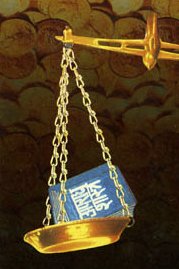Divira: 6 definitions
Introduction:
Divira means something in Hinduism, Sanskrit, the history of ancient India. If you want to know the exact meaning, history, etymology or English translation of this term then check out the descriptions on this page. Add your comment or reference to a book if you want to contribute to this summary article.
In Hinduism
Arthashastra (politics and welfare)
Source: archive.org: Hindu Mathematics (Artha)Divira (दिविर) refers to “writers” of grant plates (used as legal documents in ancient India).—They were written by professional writers. The existence of such writers is mentioned in the southern Buddhist canons and in the Epics. They have been called lekhaka, lipikara and later on divira, karaṇa, kāyastha, etc. According to Kalhaṇa (Rājataraṅgiṇī), the Kings of Kashmir employed a special officer for drafting legal documents. He bore the title of paṭṭopādhyāya, i.e., the teacher (charged with the preparation) of title deeds. The existence of manuals such as the lekhapañcaśikā, the lekhaprakāśa, which give rules for drafting letters, land grants, treaties, and various kinds of bonds and bills of exchange, show beyond doubt that the writing of grant plates [by the divira] was a specialised art and that the style of writing those documents must always have been centuries behind the times, just as it is even to-day with respect to legal and state documents.

Arthashastra (अर्थशास्त्र, arthaśāstra) literature concerns itself with the teachings (shastra) of economic prosperity (artha) statecraft, politics and military tactics. The term arthashastra refers to both the name of these scientific teachings, as well as the name of a Sanskrit work included in such literature. This book was written (3rd century BCE) by by Kautilya, who flourished in the 4th century BCE.
India history and geography
Source: Cologne Digital Sanskrit Dictionaries: Indian Epigraphical GlossaryDivira.—(HD), same as Persian Dabīr, ‘a clerk’. See Rājataraṅgiṇī, VIII. 131, mentioning Divira as distinct from Kāyastha; also CII, Vol. III, p. 122. Cf. Divirapati. Note: divira is defined in the “Indian epigraphical glossary” as it can be found on ancient inscriptions commonly written in Sanskrit, Prakrit or Dravidian languages.

The history of India traces the identification of countries, villages, towns and other regions of India, as well as mythology, zoology, royal dynasties, rulers, tribes, local festivities and traditions and regional languages. Ancient India enjoyed religious freedom and encourages the path of Dharma, a concept common to Buddhism, Hinduism, and Jainism.
Languages of India and abroad
Sanskrit dictionary
Source: Cologne Digital Sanskrit Dictionaries: Monier-Williams Sanskrit-English Dictionary1) Divira (दिविर):—m. a husband’s brother (= devara), [Demetrius Galanos’s Lexiko: sanskritikes, anglikes, hellenikes]
2) chief clerk or secretary (also -pati) [Scholiast or Commentator]
[Sanskrit to German]
Sanskrit, also spelled संस्कृतम् (saṃskṛtam), is an ancient language of India commonly seen as the grandmother of the Indo-European language family (even English!). Closely allied with Prakrit and Pali, Sanskrit is more exhaustive in both grammar and terms and has the most extensive collection of literature in the world, greatly surpassing its sister-languages Greek and Latin.
Kannada-English dictionary
Source: Alar: Kannada-English corpusDivira (ದಿವಿರ):—[noun] one who writes; a writer (esp. a professional one).
Kannada is a Dravidian language (as opposed to the Indo-European language family) mainly spoken in the southwestern region of India.
See also (Relevant definitions)
Starts with: Divira devaditya, Divira yashovardhana, Divirakishora, Divirapati, Diviratha, Tivira-kacarokam, Tivirakantam, Tiviram, Tiviravekam, Tiviravetanai.
Query error!
Full-text: Divirakishora, Divira yashovardhana, Divira devaditya, Dibira, Tivirakantam, Tiviravetanai, Tiviram, Tiviravekam, Tivira-kacarokam, Divirapati, Shibira, Grant plate, Lekhaka, Pattopadhyaya, Lekhapancashika, Lekhaprakasha, Karana, Lipikara, Kayastha.
Relevant text
Search found 2 books and stories containing Divira; (plurals include: Diviras). You can also click to the full overview containing English textual excerpts. Below are direct links for the most relevant articles:
Satirical works of Kshemendra (study) (by Arpana Devi)
3. Summary of the Narmamālā < [Chapter 3 - Satirical Works of Kṣemendra]
5.1. The Corrupt Bureaucrats < [Chapter 5 - Kṣemendra’s objectives of Satire]
5.2. The Guru and his Devotees < [Chapter 5 - Kṣemendra’s objectives of Satire]
Glories of India (Culture and Civilization) (by Prasanna Kumar Acharya)
Introduction (Temples of ancient India) < [Chapter 5 - Basic arts]